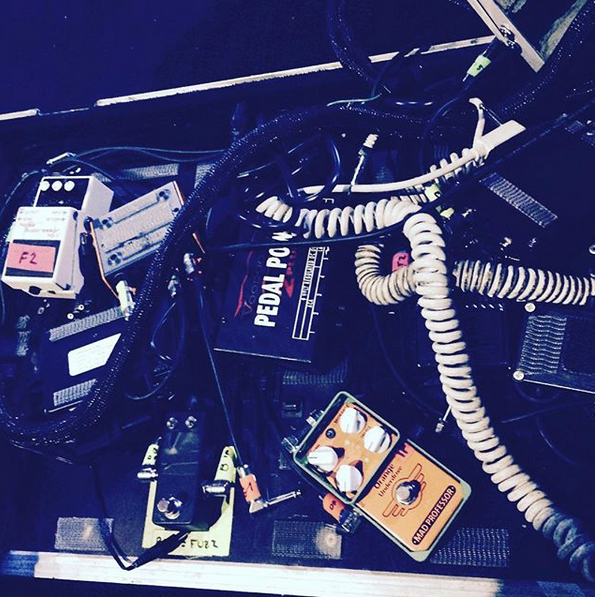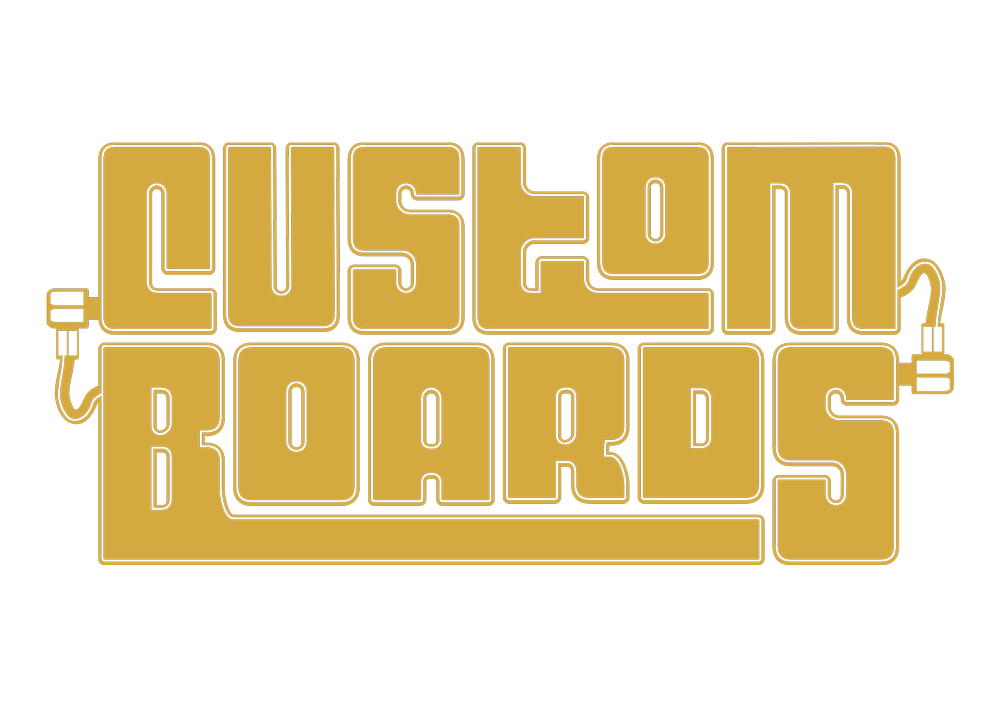3M Dual Lock or velcro – How do I attach my pedals to my pedalboard?
One of the most common problems with self-assembled pedalboards is that pedals tend to come loose during transport. This results in dents and small faults, and it puts excess strain on a pedal’s connectors, sometimes even breaking them.
Following our guide you will learn how to attach your pedals firmly, so they won’t come off during transport. Careful effect attachment will increase the lifespan of your pedals, as well as saving you the cost and trouble of having to repair them.
What is your common mode of transportation?
Think about how often you might want to detach your pedals from your board and how important a lasting attachment is for you. If you mainly use your own car, and your regular venues are only your living-room and your rehearsal space, you can easily make do with a less sturdy type of attachment. Air travel and tour busses, on the other hand, will put much more strain on your equipment, making thorough attachment a priority, if not even a must.
On the other half, nothing can save you from the wrath of the Customs inspection, but at least you know that you did your best when attaching your pedals.

Putting pedals on a pedalboard is always a balancing act between ease of detachment and keeping everything firmly attached. We don’t recommend using punched metal strips, cable ties or something similar to attach your pedals, because you should be able to remove any pedal without having to resort to tools.
Velcro – cheap and easy
Normal velcro is the easiest and most affordable way to attach pedals to a pedalboard, which is why all pedalboard frame companies tend to include a roll of velcro with their products. Velcro works in such situations where you like to swap around pedals often and where the pedalboard isn’t used for touring.

The drawbacks of velcro are a tendency for the effects to wobble when you step on them and some pedals tending to come off. Different types of velcro often have vastly different adhesives and material strengths, because, unlike 3M Dual Lock, the word velcro has become a generic synonym for any type of hook-and-loop fastener, regardless of its quality and manufacturer. This means that any old product is sold as “velcro” these days, and you can never be sure what you’ll get.
Velcro can be a viable alternative in some cases, but it is less sturdy and needs completely flat surfaces to work. For example, Velcro isn’t thick enough to work with most wah-pedals, even if you’ve removed the rubber feet. Also large and heavy pedals can prove especially difficult to keep in place. The same goes for mini-pedals, whose surface area is too small to keep them firmly in place using velcro.
If you’re assembling you first pedalboard, and you don’t plan on moving it around too much, you can still use velcro. Once regular gigging starts to appear on the horizon, you will still be able to think about a more permanent solution.
Does the pedalboard’s surface matter?
A few years ago the market was still filled with plenty of cheap and poorly-made pedalboard frames that were coated with velcro. At Custom Boards we don’t use, and we don’t recommend, velcro-coated pedalboards, because the coating will get worn over time, which will make the board unusable. The coarse surface also doesn’t allow for using any additional fasteners and clips that will greatly improve the reliability of the signal path.
If you want to make the switch, you can try ripping off the old Velcro from your frame, and then coat the frame with black polyurethane plastic using contact adhesive. The plastic will serve as a good surface to glue the 3M Dual Lock tape to.

We like our pedalboard frames to have a smooth and even surface, which is why we also wouldn’t use porous materials, such as uncoated plywood. We have chosen our pedalboard models, because their surfaces are geared towards the use of 3M Dual Lock tape.

3M Dual Lock
3M Dual Lock tape is the hook-and-loop fastener of choice for professional pedalboards all over the world. It has a much better adhesion than velcro, and it is now considered the industry standard for firm and secure attachment that stands up to heavy use.
3M Dual Lock sticks very efficiently to both frame and pedal, but the heads on its reclosable side are spaced wide enough for you to be able to lift a pedal off the board, should the need arise. On the other hand, the intertwining heads will make sure your effects won’t detach from the board, even when the board is turned upside down. It is also thick enough to work its way around any battery compartment lid and the like, which will become extremely important when you attach you wah pedal to the pedalboard.

What is the difference between 3M Dual Lock and similar products sold at the hardware store?
In short: The best possible ratio between its adhesive and the amount of hooks and loops. Scotch is 3M’s consumer brand, while Dual Lock is aimed mostly at industrial use.
The adhesive used for this tape is tightly quality controlled and thoroughly tested. The whole manufacturing process of the tape is also strictly controlled. There’s a detailed manual available for 3M’s Dual Lock product range that lists the tape’s adhesive’s grip on a whole range of different materials. 3M Dual Lock is widely used in industrial applications to attach things like parts of the interior of cars or wall panels in train compartments, which also makes it a good choice for pedalboards. What also puts 3M’s Dual Lock above any lesser competitors is the fact that its adhesive won’t leave any residue on the pedal or frame, should you decide to rearrange your setup.
Clear 3M Dual Lock SJ-3560 – proper attachment
Clear 3M Dual Lock is a good choice for many pedalboards. The hooks and fasteners lock tightly and the pedals stay firmly put, if the tape has been installed correctly. Despite being held firmly in place, each pedal can be easily removed from the board without having to use any tools, such as a screwdriver. And should a pedal ever come loose the 3M tape will not have come off is baseplate.

Combining black and clear 3M Dual Lock – superior attachment
For our Custom Boards pedalboards we mainly use clear Dual Lock on the baseplates of the pedals and black tape on the pedalboard frames. Because the two types of tape have different hook densities and groupings, combining the two types of Dual Lock makes for an extremely strong bond. Especially for air travel, a firm and secure attachment of the pedals is paramount.
Attaching structured surfaces
Using only black Dual Lock is a good way to attach equipment to the underside of a pedalboard frame. The black Dual Lock’s adhesive is designed for coarse or structured surfaces, making it a real lifesaver, when dealing with Cioks power supplies and their structured finishes. If you have a pedal with a coarse finish on its baseplate – like on some old MXR effects – using only black 3M Dual Lock is also a valid idea.
*****
If you have purchased all the parts and components but get a feeling that you might not be up to the task after all, we can make your pedalboard for you, using the components you have bought from us. Don’t worry, we won’t let anything go to waste.

